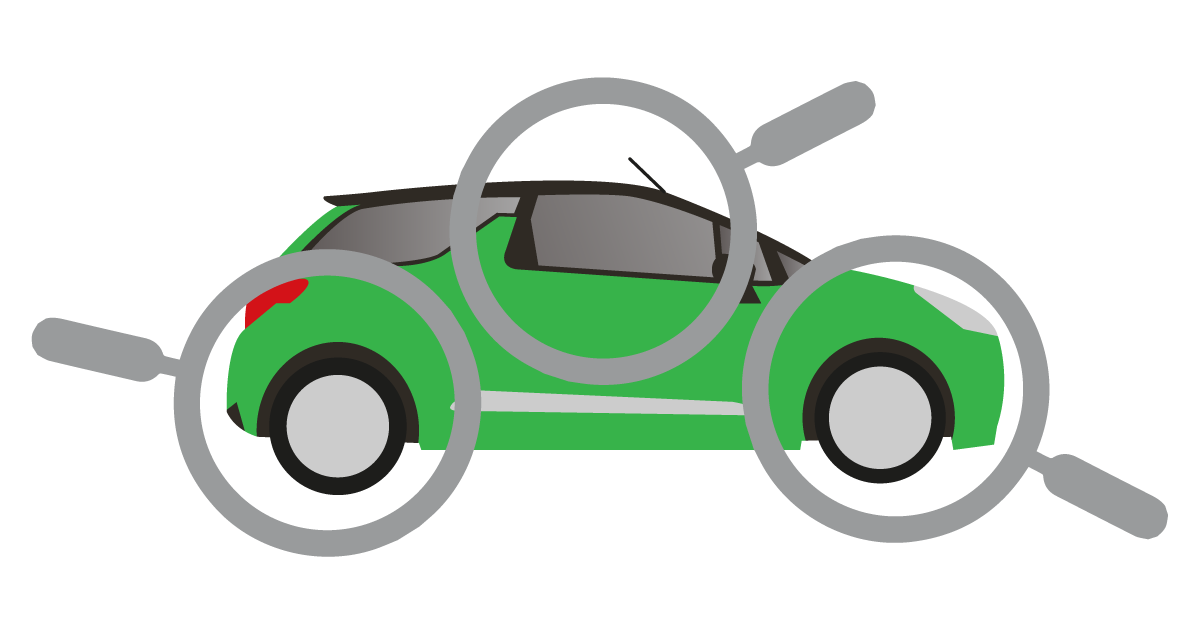
We know drivers want to be sure they are getting a good deal, so here at Go Car Credit we have complied a list of helpful tips on what to look for when inspecting a used car you are planning to buy, so you can be sure you’re getting a good deal.
Exterior checks
- Check the bodywork for a consistent paint finish – the paint should be the same shade all over the car, if not it has probably had some damage and a re-spray.
- Make sure the gaps between the panels are the same width. If not, the car could have been crashed and repaired.
- Check the cars vehicles identification number (VIN) for signs of tampering. The VIN is recorded on a metal strip at the base of the windscreen under the bonnet or beneath the carpet on the driver’s side.
- Check the tyres and the spare wheel with a tread gauge. The minimum legal tread depth is 1.6mm across the width of the tyre
- Make sure the tyres have even wear – more wear on one side of the tyre indicates the suspension or tracking alignment needs adjusting, it could also point to crash damage.
Under The Bonnet
- Check for oil, water or other fluid leaks around the engine and other mechanical components as well as on the ground underneath
- Remove the engine oil dipstick, wipe it with a cloth and replace it. Remove it again and check the oil is on or around the ‘max’ level, the oil should be golden and free from debris- if not the oil will need changing and could indicate neglect.
- Check the top of the engine and underneath the engine oil cap for a white substance which could indicate a damaged engine gasket and often irreparable engine damage
- Check the fluid levels for the engine coolant and brake fluid are at the correct levels when the engine is cool.
- Check the battery terminals and connectors on top of the battery are rust free and in good condition
Inside the Car
- The mileage on the odometer inside the speedometer should be consistent with the advert and cars documents
- Make sure everything works, including the air conditioning, electric windows, sunroof, adjustable seatbelts and bonnet release.
- Look for damage to the steering column and ignition. Damage could indicate the car has been stolen at some point.
- Check the seatbelts, the passenger side of the dashboard and the steering wheel cover – frayed seatbelts could indicate they have been activated in a crash and damage to the dashboard and steering wheel could mean the car’s airbags have been activated in a crash.
Paperwork Checks
- Check the car’s logbook, service history, previous MOT certificates and any old bills and receipts to establish if the car has been cared for, identify reoccurring faults and check the cars mileage is genuine
- Look at each MOT certificate and servicing stamp – the cars total mileage should increase at a steady rate at each MOT and service interval
- Only accept original paperwork and check for forgeries – the logbook should have a watermark and you can call the garage the last MOT was carried out at and the previous owner to check the car’s past.
- V5 registration document – This is the registration document showing who is the registered keeper of the vehicle. When buying, ensure that the seller matches up with the person on the document. If it does not you could be dealing with a stolen vehicle
- Investigate if the car is a write off, when a car is written off, the insurer will inform the DVSA – who will then not submit a replacement registration document. Use Direct Gov to contact the DVSA and find out if the vehicle is a write off.
- Check the vehicle has no outstanding finance that should be paid off. There are a number of handy sites to help you with this, including Experian.



